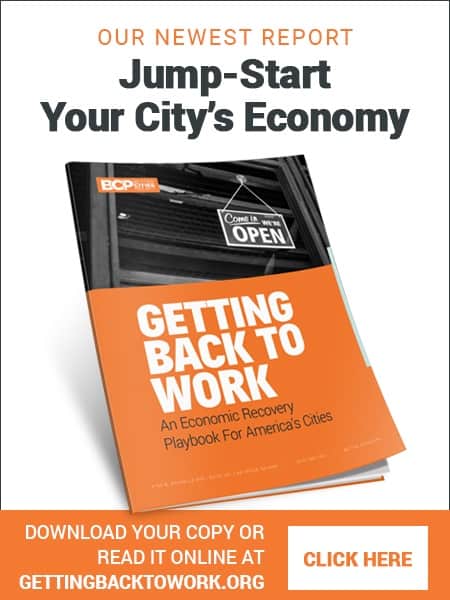Employers are justifying these mandates by arguing they improve productivity, build more collaborative teams and improve mentorship for junior employees.
Employers are not the only group ecstatic about these mandates. Municipalities and business owners are also expressing hope that the presence of office workers will spin off into greater consumer spending at restaurants and other businesses near office buildings. The expectation is that office workers will once again start spending money on coffee, lunch or after-work beverages.
In 2022, the mayor of Ottawa partially blamed the downtown core’s economic struggles on the fact that federal public service workers were still largely working remotely. Federal workers have since been mandated to return to work in-person three days a week in late fall.
The Canadian Federation of Independent Business similarly criticized the slow return to offices as a leading factor behind why small and medium-size businesses, especially restaurants and bars, are facing challenges in downtown areas.
Insight into restaurant success
During the pandemic, there were predictions that more than half of Canada’s independent restaurants would fail as part of their customer base — office workers — shifted to working from home.
Our recent study investigated which operational, demographic and land use factors affected restaurant survival during the first year of the pandemic in London, Ont.
We found no significant differences between restaurants that failed and restaurants that survived based on proximity to office uses. Instead, operational decisions made by restaurants individually were much more predictive of their survival than any geographic factor, including the presence of offices.
We found that restaurants located in areas receiving more CERB (Canadian Emergency Response Benefit) payments, and with a higher density of entertainment venues around them, were less likely to survive.
Restaurants that adapted by offering pickup and delivery options were more likely to survive, though only for those that did their own delivery in-house rather than relying on platforms like UberEats and SkipTheDishes. Restaurants that had drive-thrus, held liquor licenses, or had been established for more than five years were more likely to survive. These older, more established restaurants were likely more resilient because of financial stability and customer loyalty.
Table-service restaurants fared better than fast food outlets, likely because they could offer large patio dining spaces during the summer. Restaurants with liquor licenses substantially benefited, especially after a regulatory change by the Ontario government that allowed alcohol sales with takeout and delivery — a first for the province.
In short, restaurant success was driven more by individual business decisions rather than being in a specific location. People working remotely instead of in the office did not significantly affect restaurant survival during the first year of the pandemic.
Downtown struggles
As Canadian downtowns look to recover, many face ongoing challenges. Activity levels are down by about 20 per cent from pre-pandemic levels in many places, lagging behind many similarly sized downtowns in the United States.
This downturn has been partially attributed to a combination of higher office building vacancies and fewer workers downtown. For the first time, downtown office vacancy rates have exceeded suburban rates in the Greater Toronto Area. There has also been tremendous housing growth within many downtown cores.
At the same time, downtowns have become a highly visible focal point of Canada’s growing addictions, mental health and housing crises. The pandemic fully revealed the deeper social, economic and health challenges happening in Canadian society.
While violent incidents are rare, the social incivilities and disorder on display — public urination and defecation, open drug use, visible tents and property crime — contributes to a perception that Canadian downtowns are unsafe. This perception, whether accurate or not, has an impact on the willingness of people to engage with their downtowns.
A way forward
The damage to the reputation of Canada’s downtowns has been done. Downtown London now has the highest office vacancy rate in the country. The Workplace Safety Insurance Board of Ontario, for instance, recently chose to consolidate its offices in the outskirts of London, rather than downtown.
Many people now elect to spend their time and money in areas that have embraced the “experience economy.” These are places that provide highly manicured entertainment and shopping destinations, with restaurants being the bedrock of enabling high quality experiences in these areas.
Foot traffic is at an all-time high in suburban shopping centres. The downtowns of cities that are widely known as global tourist destinations — Las Vegas, Miami and Nashville — have activity levels close to or higher than their pre-pandemic levels.
These are places that are developing highly attractive economies that provide people with the safe, fun and exciting experiences they are looking for locally and internationally. Instead of trying to force unwilling workers back to the office, Canadian cities should instead focus on developing downtowns that people genuinely want to visit and experience.
One potential way to do this is to provide wrap-around support services and direct pathways to stable housing across the entire community, as the City of London has done. By spreading care and outreach services across the entire city, rather than concentrating them exclusively in downtown areas, the negative effects from Canada’s homelessness crisis can be reduced on urban cores.
This type of strategy will direct those who need help away from downtowns, and may even permanently lift them out of poverty. In turn, Canadian downtowns can return to being places for everyone to shop, eat, relax, and work in comfort.









